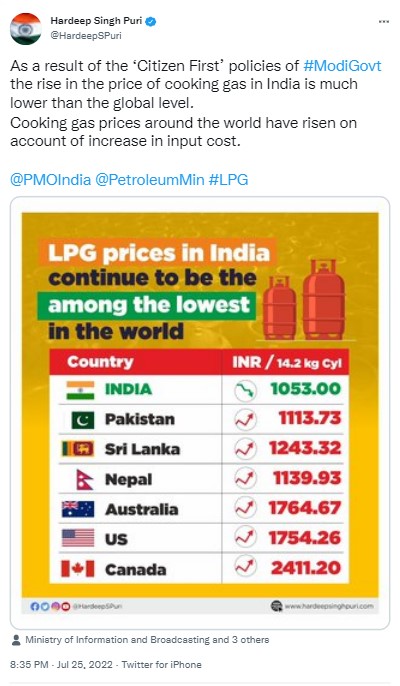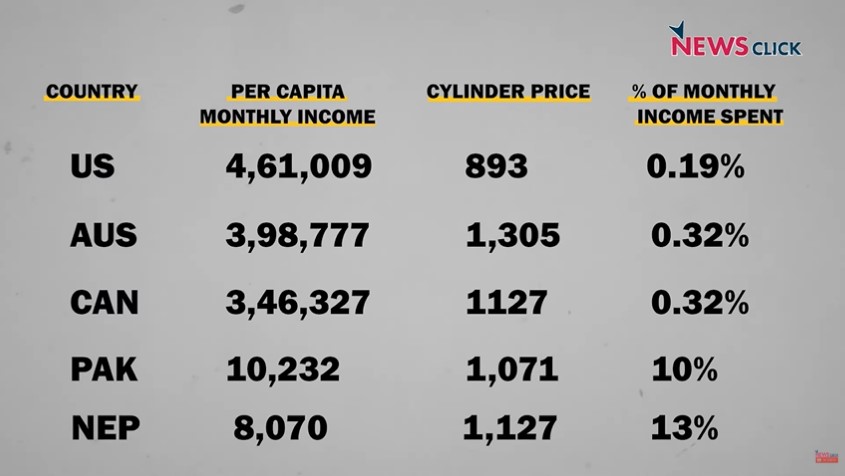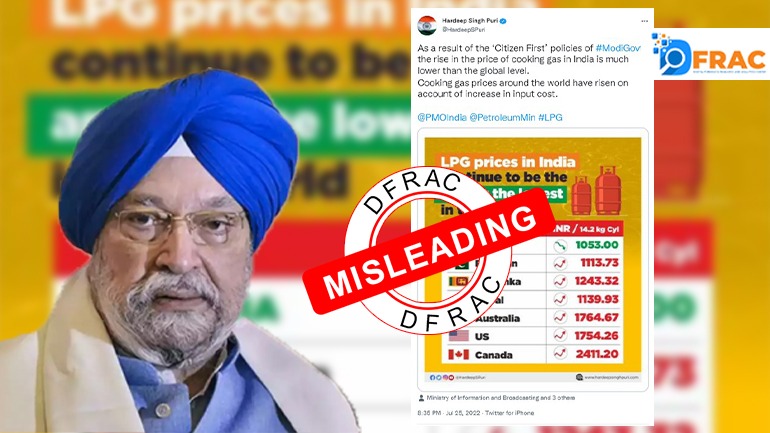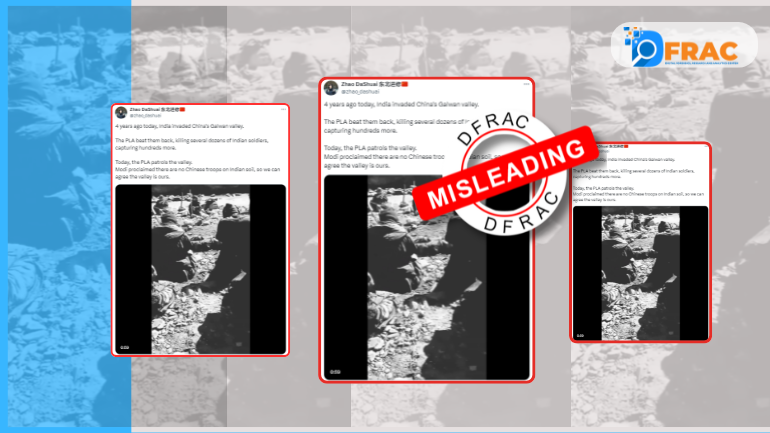India’s Union Minister for Housing & Urban Affairs & Minister for Petroleum and Natural Gas, Hardeep Singh Puri tweeted, “As a result of the ‘Citizen First’ policies of #ModiGovt the rise in the price of cooking gas in India is much lower than the global level. Cooking gas prices around the world have risen on account of increase in input cost. ”Further, he shared a table showing the LPG cylinder prices of different countries. In the picture, the prices of gas are in India, Pakistan, Sri Lanka, Nepal, Australia, the US, and Canada. It was written there that LPC prices in India continue to be among the lowest in the World.

His tweet got viral with hundreds of retweets. Moreover, Zee news also hailed the claim in its show DNA.
Fact Check
The tweet of Puri gives rise to the question about the dimensions needed to be included to compare prices in different countries. Such comparisons have no relevance if the factors like purchasing capacity, per capita income, and inflation are taken into account. Our quest leads us to a YouTube video on the channel of NewsClickin which beautifully explains the parameters of measuring prices.
Furthermore according to them India’s per capita monthly income is Rs. 15,152. While the cylinder price is Rs. 1,053. It implies that on average a person in India spends 7% of his monthly income to buy a cylinder. While in the US a person spends 0.19% of his monthly income to buy a cylinder. Similarly, a person in Australia and Canada spends 0.32% of his monthly income to buy a cylinder. India is still better than Pakistan and Nepal but it can hardly be called an achievement.

The mean the cost of cylinder is heavier on the pocket of an average person in India. Let us understand this in simple language by taking an example of two friends A and B. They both live on rent and pay Rs. 10,000 as room rent. The monthly income of A is Rs. 20,000 and that of B is Rs. 1,00,000. The rent for A is 50% of his monthly salary while that for B is only 10%. As the income of A is very less than B, the burden of rent is ore on the pocket of A.
Conclusion
If a commodity’s price is high in one country, is it justified that it should be high in another country? These types of comparisons are deceptive as it doesn’t take into account the purchasing capacity of a person from different countries. That is to say, Puri’s claim is misleading.





